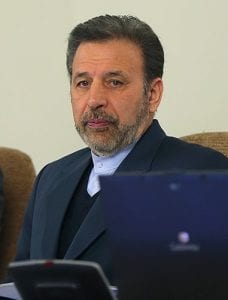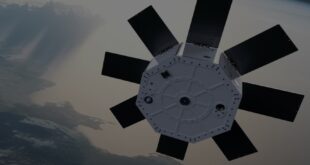
The Iranian minister for Communication and Information Technology, Mahmoud Vaezi, urged Russia to start work on constructing the remote sensing satellite both countries agreed upon earlier this year.
Speaking in the sidelines of the 13th meeting of the Russian-Iranian Permanent Intergovernmental Commission on Trade and Economic Cooperation in Tehran, Minister Vaezi said, “I hope that after this session the construction of the satellite in cooperation with Russia will start.”
The remote sensing satellite that Iran and Russia agreed to build will likely be the National Remote Sensing Satellite (NRSS) that the Iran Space Agency announced, along with the National Communications Satellite (NCS), this past summer. A number of companies from China, France, Russia, and South Korea have expressed interest in building Iran’s NCS, while it would appear that Tehran has opted for a Russian-built NRSS.
Speaking in October 2016, Minister Vaezi said that the NRSS is a national priority and that an unnamed Russian company had been contracted to build it.
In March 2016 it was reported by SpaceWatch Middle East that Russian satellite manufacturer Space Monitoring Systems, Information and Control and Electromechanical Complexes (VNIIEM) was in talks with Iran to build a variant of the Kanopus-V remote sensing satellite for Tehran.
The Kanopus-V was originally designed to provide real-time, high-resolution imagery to monitor natural and man-made disasters as well as other contingencies. Kanopus-V has a panchromatic resolution of 2.1 meters with a 20-kilometer swath, and a multispectral resolution of 10.5 meters with a 41km swath. An Iranian version of the Kanopus-V satellite would be launched into a sun-synchronous orbit at an altitude of 510-540 kilometers. The satellite will likely weigh about 400 kilograms with a payload capacity for cameras of 110kg. Kanopus-V has a power capacity of 300 Watts, and can store up to 24 Gigabytes of data in its internal memory and can transmit its imagery to Earth on 8,048–8,381.5 Mega-Hertz at speeds of 122.88-61.4 Megabytes per second. Lastly, the Kanopus-V satellite has an average operational lifetime of five years.
Original published at: http://spacewatchme.com/2016/12/iran-pushes-russia-start-building-remote-sensing-satellite/
 SpaceWatch.Global An independent perspective on space
SpaceWatch.Global An independent perspective on space

